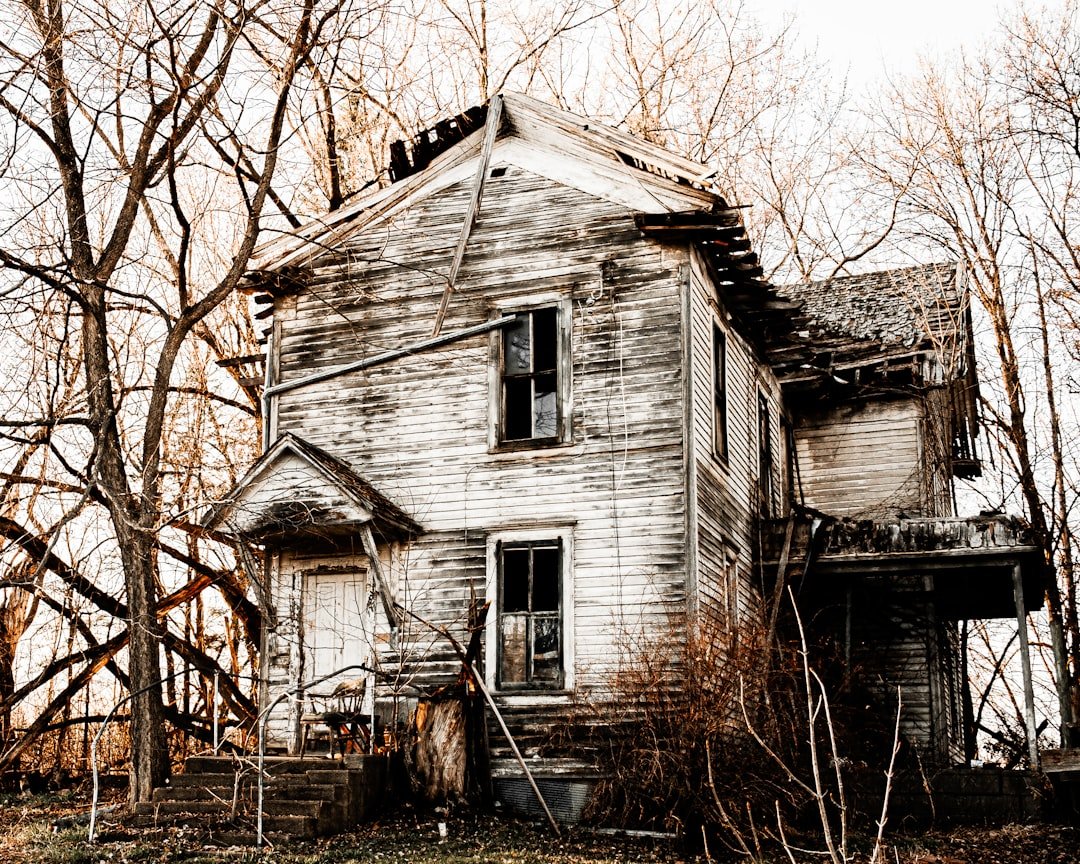Now Reading: Are horror games too realistic for VR?
-
01
Are horror games too realistic for VR?
Are horror games too realistic for VR?

As I delve into the world of virtual reality (VR) horror games, I find myself captivated by the unique blend of technology and storytelling that these experiences offer. VR horror games transport players into immersive environments where they can confront their deepest fears in ways that traditional gaming cannot replicate. The sensation of being physically present in a haunted house or a dark forest amplifies the tension and excitement, making every jump scare feel more visceral.
This genre has gained significant traction in recent years, drawing in both seasoned gamers and newcomers alike, all eager to test their courage against the unknown. The allure of VR horror games lies not only in their ability to frighten but also in their capacity to engage players on a psychological level. As I navigate through these chilling landscapes, I am acutely aware of how my senses are heightened.
The sounds of creaking floorboards, the flickering of lights, and the eerie silence that often precedes a scare create an atmosphere that is both thrilling and terrifying. This immersive experience has redefined what it means to be scared in a gaming context, pushing the boundaries of fear and excitement in ways that were previously unimaginable.
Key Takeaways
- VR horror games provide an immersive and intense experience for players, creating a heightened sense of fear and anxiety.
- The evolution of horror games in virtual reality has allowed for more realistic and immersive experiences, blurring the lines between fiction and reality.
- Realistic horror games in VR can have a significant impact on players, eliciting strong emotional and physiological responses.
- Playing horror games in VR can have psychological effects, such as increased heart rate, anxiety, and desensitization to violence and fear.
- Ethical considerations arise in creating realistic horror games for VR, including the potential for triggering trauma in players and the responsibility of game developers to prioritize player well-being.
The evolution of horror games in virtual reality
The journey of horror games into the realm of virtual reality has been nothing short of remarkable. Initially, horror games relied heavily on 2D graphics and sound effects to create an atmosphere of dread. As technology advanced, so did the complexity of these games, leading to the introduction of 3D environments and more sophisticated storytelling techniques.
However, it wasn’t until the advent of VR technology that horror games truly transformed into an experience that could evoke genuine fear and anxiety. I remember the first time I donned a VR headset and stepped into a horror game. The transition from a flat screen to a fully immersive environment was staggering.
I was no longer just a player; I was part of the narrative. The evolution from traditional horror games to VR has allowed developers to explore new dimensions of fear, utilizing spatial audio and realistic graphics to create an unparalleled sense of presence. This shift has not only changed how we experience horror but has also opened up new avenues for storytelling, allowing for more intricate plots and character development.
The impact of realistic horror games on players

Realistic horror games in VR have a profound impact on players, often eliciting strong emotional responses that linger long after the game is over. As I navigate through these chilling scenarios, I find myself fully immersed in the narrative, feeling every ounce of fear and tension that the developers intended. The realism of these experiences can lead to heightened adrenaline levels, making my heart race as I encounter terrifying creatures or face life-threatening situations. This emotional engagement is what sets VR horror apart from its traditional counterparts.
Moreover, the impact of these games extends beyond mere entertainment; they can serve as a form of catharsis for players. Engaging with fear in a controlled environment allows me to confront my anxieties and phobias without real-world consequences. In this way, VR horror games can act as a safe space for exploration and self-discovery.
However, this intense engagement also raises questions about the long-term effects on players’ mental health and well-being, particularly when it comes to repeated exposure to such realistic horrors.
The psychological effects of playing horror games in VR
The psychological effects of playing horror games in virtual reality are complex and multifaceted. On one hand, these experiences can provide a thrilling escape from reality, allowing me to confront fears in a safe environment. The adrenaline rush that accompanies navigating through terrifying scenarios can be exhilarating, creating a sense of accomplishment once I overcome challenges.
However, this thrill can also lead to anxiety and stress, especially for those who are more sensitive to horror themes. As I reflect on my experiences with VR horror games, I recognize that they can evoke a range of emotions—from fear and excitement to relief and satisfaction. Yet, there is a fine line between enjoyment and distress.
For some players, the intense realism can trigger feelings of panic or dread that linger long after the headset is removed. Understanding these psychological effects is crucial for both players and developers alike, as it highlights the need for responsible game design that considers the emotional well-being of its audience.
The ethical considerations of creating realistic horror games for VR
The creation of realistic horror games for virtual reality brings forth a host of ethical considerations that developers must navigate carefully. As I engage with these immersive experiences, I often ponder the responsibility that comes with crafting narratives that can deeply affect players’ mental states. Developers have the power to evoke strong emotions, but with that power comes the obligation to ensure that their creations do not cause harm.
One significant ethical concern is the potential for desensitization to violence and fear. As I play through increasingly graphic scenarios, I can’t help but wonder how these experiences might shape my perceptions of real-world violence or fear-inducing situations. Developers must strike a balance between creating engaging content and being mindful of the potential consequences on players’ mental health and societal attitudes toward violence.
The potential desensitization to violence and fear in VR horror games

Desensitization is a critical issue when it comes to VR horror games, particularly those that emphasize graphic violence or intense fear-inducing scenarios. As I immerse myself in these experiences, I sometimes find myself becoming numb to the horrors unfolding before me. This desensitization can lead to troubling implications for how I perceive violence in real life and how I respond to fear-inducing situations outside of gaming.
The potential for desensitization raises important questions about the long-term effects of engaging with such content regularly. While I may enjoy the thrill of facing my fears in a virtual environment, repeated exposure to extreme scenarios could dull my emotional responses over time. Developers must consider how their creations might influence players’ attitudes toward violence and fear, ensuring that they do not inadvertently contribute to a culture that normalizes or trivializes these serious issues.
The role of age restrictions and parental controls in VR horror games
Given the intense nature of VR horror games, age restrictions and parental controls play a vital role in ensuring that younger audiences are protected from potentially harmful content. As I explore these chilling narratives, I recognize that not all players are equipped to handle the psychological impact of such experiences—especially children or adolescents who may be more impressionable. Age restrictions serve as a necessary safeguard, helping to delineate which content is appropriate for different age groups.
Parental controls also provide an essential layer of protection for younger players. As someone who values responsible gaming practices, I appreciate when developers implement features that allow parents to monitor gameplay and restrict access to certain titles based on their content ratings. This proactive approach helps ensure that children are not exposed to material that could be detrimental to their emotional well-being while still allowing them to enjoy age-appropriate gaming experiences.
The potential for triggering trauma in players through realistic VR horror games
One of the most concerning aspects of realistic VR horror games is their potential to trigger trauma in players who may have experienced real-life horrors or traumatic events. As I engage with these immersive experiences, I am acutely aware that what may be thrilling for one player could be deeply distressing for another. The realism inherent in VR can blur the lines between fiction and reality, making it crucial for developers to consider how their narratives might affect individuals with past traumas.
For those who have faced significant challenges or traumatic experiences, encountering similar themes in a game can evoke powerful emotional responses that may lead to anxiety or panic attacks. It is essential for developers to include content warnings and provide resources for players who may need support after engaging with such material. By acknowledging the potential for trauma triggers within their narratives, developers can foster a more responsible gaming environment that prioritizes player well-being.
The responsibility of game developers in creating realistic horror games for VR
As I reflect on the role of game developers in creating realistic horror experiences for virtual reality, it becomes clear that they bear a significant responsibility toward their audience. With the power to evoke strong emotions comes the obligation to ensure that their creations do not cause harm or distress. Developers must approach their craft with sensitivity and awareness, considering how their narratives might impact players’ mental health and emotional well-being.
This responsibility extends beyond simply crafting engaging content; it involves actively seeking feedback from players and understanding their experiences with horror games. By engaging with their audience and being receptive to concerns about mental health implications, developers can create more thoughtful narratives that prioritize player safety while still delivering thrilling experiences.
The benefits and drawbacks of experiencing horror games in virtual reality
Experiencing horror games in virtual reality offers both benefits and drawbacks that are worth exploring. On one hand, the immersive nature of VR allows me to engage with narratives in ways that traditional gaming cannot replicate. The heightened sense of presence creates an unparalleled thrill as I navigate through terrifying environments, making every jump scare feel more impactful.
This level of immersion can lead to memorable gaming experiences that resonate long after I’ve put down the headset. However, there are also drawbacks associated with this level of immersion. The intense realism can lead to heightened anxiety or distress for some players, particularly those who may be more sensitive to horror themes or have experienced trauma in their lives.
Additionally, prolonged exposure to such content may contribute to desensitization or negative shifts in perception regarding violence and fear. Striking a balance between enjoying the thrill of VR horror while being mindful of its potential effects is essential for maintaining a healthy gaming experience.
Finding a balance between realism and player well-being in VR horror games
In conclusion, as I navigate through the chilling landscapes of VR horror games, I am reminded of the delicate balance between realism and player well-being that developers must strive to achieve. These immersive experiences have revolutionized how we engage with fear and storytelling, offering thrilling escapism while also posing significant ethical considerations regarding mental health and emotional impact. As both players and creators continue to explore this evolving genre, it is crucial to prioritize responsible game design that considers the diverse needs and sensitivities of its audience.
By fostering an environment where thrilling narratives coexist with player safety, we can ensure that VR horror games remain an exciting yet mindful form of entertainment—one that allows us to confront our fears while safeguarding our mental well-being.
Are horror games getting too realistic for VR? This question has been on the minds of many gamers as technology continues to advance. One related article that delves into the world of gaming is

















